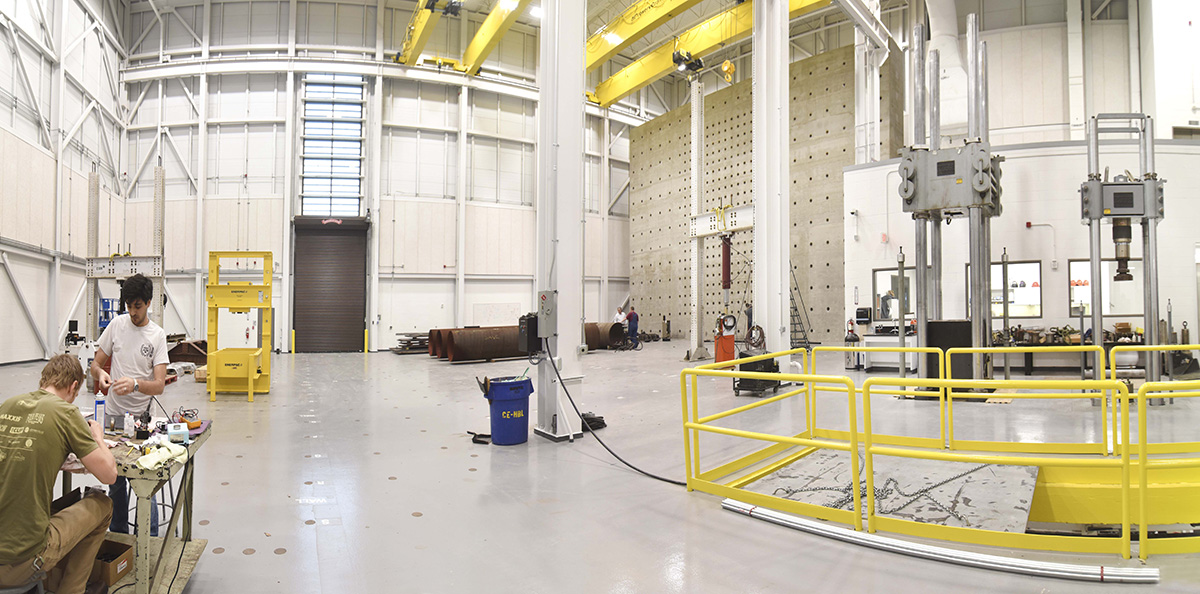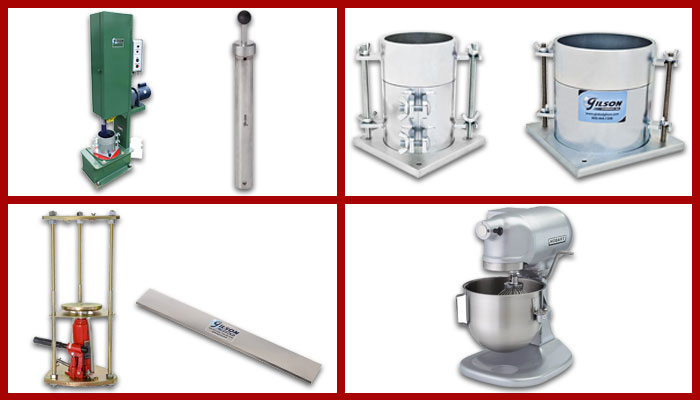Your Trustworthy Material Testing Lab Partner: A Commitment to Excellence
Wiki Article
Improvements in Product Testing for Unprecedented Performance
This brings us to the appealing realm of improvements in material screening, where advanced methodologies and innovative techniques are changing the method we recognize and enhance product efficiency. Allow us get started on this trip of exploration, as we discover the impressive improvements in product testing and their possible to shape the future of different industries.Non-Destructive Checking Strategies
Non-destructive screening methods are vital for examining the stability and dependability of materials without triggering any damage. These methods play a crucial function in numerous industries, consisting of aerospace, automobile, building, and production. By using non-destructive testing methods, designers can examine the properties and attributes of materials, making sure that they meet the called for requirements and requirements.
An additional commonly used technique is magnetic bit testing (MT), which is mostly utilized for finding surface and near-surface issues in ferromagnetic products. By applying an electromagnetic field to the material and afterwards introducing magnetic bits, any type of problems present can be quickly determined. MT is particularly reliable for spotting fractures, absence of combination, and other surface irregularities.
Advanced Materials Characterization Techniques
Advanced materials characterization methods are vital tools for evaluating the residential or commercial properties and performance of materials in different markets. These methods entail making use of advanced strategies to assess and comprehend the microstructure, composition, and actions of products at the molecular and atomic levels. By utilizing advanced characterization scientists, engineers and approaches can acquire useful insights right into the structural integrity, mechanical buildings, thermal stability, and chemical sensitivity of products.One widely utilized approach is scanning electron microscopy (SEM), which provides high-resolution pictures of a product's surface. An additional crucial method is X-ray diffraction (XRD), which offers info regarding the crystal structure and phase structure of materials.
Additionally, transmission electron microscopy (TEM) allows researchers to observe the internal structure of materials with atomic resolution. TEM is capable of disclosing details such as grain misplacements, defects, and limits, providing crucial information about a product's mechanical buildings - material testing lab. Furthermore, spectroscopic methods like Fourier-transform infrared spectroscopy (FTIR) and Raman spectroscopy can be utilized to assess the chemical structure, molecular framework, and vibrational modes of products
High-Temperature and Extreme Setting Testing
In order to review the efficiency of materials in high-temperature and extreme environments, extensive screening methods are required. These testing methods are developed to imitate the problems that materials might experience in real-life applications, such as aerospace, auto, and energy industries. Extreme and high-temperature setting testing aims to assess the actions of products under severe heat, stress, and various other difficult problems.One generally utilized method for high-temperature testing is thermal analysis. This technique entails subjecting the material to differing temperatures while determining its thermal buildings, such as thermal growth, warm capability, and thermal conductivity. By analyzing these buildings, scientists can determine just how the material will certainly act under various temperature conditions, enabling them to pick the most appropriate materials for certain applications.
One more essential aspect of severe and high-temperature environment testing is mechanical testing. This includes subjecting the product to mechanical anxiety at elevated temperature levels, replicating the conditions it might experience in real-world applications. Mechanical testing helps assess the material's resistance, ductility, and toughness to contortion and failure under severe and high-temperature problems.
Additionally, ecological testing is essential to examine the product's efficiency in extreme problems, such as harsh environments or exposure to extreme climate condition. This screening involves subjecting the material to different ecological variables, such as moisture, salt spray, and view website UV radiation, to review its longevity and resistance to corrosion and degradation.

Simulation and Modeling for Material Efficiency
Simulation and modeling play an essential role in understanding and anticipating the efficiency of products in numerous applications. With improvements in computational capacities, researchers and engineers can now replicate and model the actions of products under various problems, providing beneficial insights right into their performance and helping in the development of new products with boosted homes.With simulation and modeling, scientists can research the macroscopic and microscopic habits of products, including their mechanical, thermal, and electrical residential or commercial properties. This permits them to predict exactly how materials will certainly behave under different lots, temperatures, and ecological conditions, without the need for pricey and time-consuming speculative screening.
Simulation and modeling strategies likewise enable scientists to optimize material styles and determine prospective weak points or failure factors. By researching the product's reaction to different pressures and stimuli, engineers can make enlightened decisions about material option and layout adjustments to enhance efficiency and sturdiness.
In addition, simulation and modeling can aid in the advancement of materials for certain applications. For instance, in the aerospace market, scientists can replicate the actions of products under extreme temperature levels and pressures to create light-weight yet solid products for aircraft structures (material testing lab). In the medical field, simulation methods can be used to study the communications in between products site and biological tissues, bring about the advancement of biocompatible products for implants or drug delivery systems
Integration of Expert System in Product Testing
The unification of Artificial Intelligence (AI) into material testing has revolutionized the area, making it possible for scientists to accomplish unprecedented accuracy and efficiency in reviewing material efficiency. AI algorithms can refine and analyze large quantities of information, determining patterns and relationships that may not be promptly evident to human scientists. This permits more extensive and accurate testing, causing a deeper understanding of product behavior.One application of AI in product screening remains in the development of predictive versions. By educating AI formulas on substantial datasets of product properties and performance, scientists can produce versions that can precisely predict the habits of brand-new materials under various conditions. This can significantly speed up the product development procedure, as it allows scientists to screen and focus on materials with desired properties.
In addition to anticipating modeling, AI can likewise be utilized to optimize screening treatments. By evaluating historical screening data, AI algorithms can recognize the most effective and helpful examinations to perform, reducing the moment and sources needed for material analysis.
Furthermore, AI can help in the identification of anomalies or problems in products. By contrasting test results against expected results, AI algorithms can find variances and sharp researchers to potential issues. This can pop over to these guys assist boost quality assurance processes and make certain the usage of products that fulfill the required requirements.
Conclusion

By examining these residential or commercial properties, scientists can figure out exactly how the product will certainly behave under different temperature problems, enabling them to select the most suitable products for specific applications.
The consolidation of Artificial Knowledge (AI) right into material testing has actually reinvented the area, making it possible for scientists to accomplish extraordinary accuracy and effectiveness in reviewing product performance.In conclusion, innovations in material testing techniques, characterization methods, high-temperature and extreme atmosphere screening, and the integration of synthetic knowledge have actually substantially added to the development of unprecedented performance in materials. These innovations have actually allowed for the recognition of material residential properties and behaviors, making it possible for the layout and optimization of materials for various applications. material testing lab. With further research and technical developments, product screening will certainly continue to play a vital role in pressing the borders of material efficiency
Report this wiki page